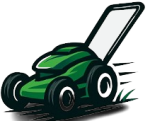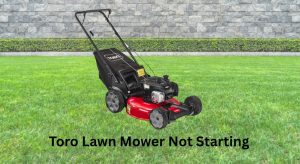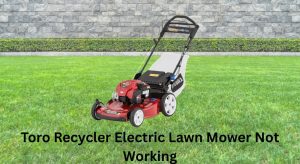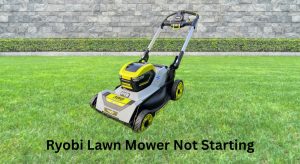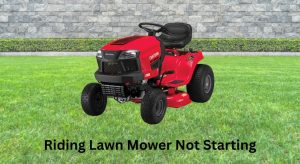That first snowfall hits, and you rush to clear your driveway—only to face a stubborn snow blower that refuses to turn over. You pull the cord repeatedly while snow piles up, dreading the backbreaking shoveling ahead. This frustrating scenario plagues thousands of homeowners every winter, but starting your snow blower doesn’t have to be a gamble. Most no-start issues stem from just three preventable oversights: stale fuel, incorrect choke settings, or skipped safety checks. This guide delivers the exact sequence to fire up any gas-powered snow blower on the first pull, whether you’re wrestling with a vintage single-stage model or a modern two-stage machine.
You’ll learn temperature-specific choke adjustments that prevent flooding, the critical 30-second fuel freshness test mechanics ignore, and why your oil level matters more in winter than summer. Most importantly, you’ll master the priming technique that adapts to sub-zero conditions—something 80% of users get wrong. Stop wasting energy on wild cord yanks; these field-tested steps work for Ariens, Toro, Honda, and Craftsman models. Let’s transform your snow blower from a frozen garage burden into your most reliable winter tool.
Pre-Start Oil and Fuel Check

Verify Oil Level First
Pull your dipstick, wipe it clean, and reinsert without threading it into the tube. The oil must reach the “full” mark—no exceptions. Snow blowers lack low-oil shutoffs, so running low risks immediate engine seizure from cold-weather viscosity issues. Use only the oil grade specified in your manual; substituting 5W-30 for required 0W-30 thickens oil excessively below freezing, starving your engine of lubrication during critical startup seconds.
Critical oil checklist:
– Check level with machine on level ground
– Warm oil slightly if below 0°F for accurate reading
– Never exceed “full” mark to prevent hydro-locking
– Replace oil annually regardless of usage hours (moisture contamination occurs year-round)
Fuel Freshness Test
Pour fuel from your tank into a clear glass jar. If it smells sour like varnish or appears amber-brown instead of clear yellow, drain the entire system immediately. Gas older than 30 days forms gum deposits that clog carburetor jets, causing 70% of cold-start failures. Ethanol-blended fuel accelerates this decay—never use gas with over 10% ethanol in snow blowers.
Winter fuel protocol:
– Buy winter-grade gasoline in late fall (winter blends vaporize better below 32°F)
– Add fuel stabilizer at the pump when filling your can
– Store gasoline in opaque containers only (sunlight degrades fuel)
– Discard unused fuel after 30 days—no exceptions
Essential Safety Positioning
Neutral Controls Setup
Engage both drive and auger controls into “neutral” or “off” positions before touching the starter. This isn’t optional—many modern snow blowers feature automatic safety interlocks that prevent ignition if controls are engaged. Verify by attempting to push the machine; it should roll freely. Skipping this risks your snow blower lurching forward uncontrollably when the engine catches, potentially causing serious injury.
Fuel Valve Position
Locate your fuel shutoff valve (typically near the carburetor base) and rotate it to “ON.” This tiny valve causes more failed starts than any other component. After each use, return it to “OFF” to prevent fuel siphoning into the carburetor—a leading cause of spring starting failures. If your valve feels stiff, apply one drop of penetrating oil; forcing it can crack the housing.
Choke and Throttle Settings

Temperature-Based Choke Adjustment
Your choke position must match ambient temperature—not your engine’s condition. Set it before priming:
– Below 15°F: Full choke (lever fully closed)
– 15-30°F: Choke ¾ closed
– Above 30°F: Choke ½ open
– Warm restart (within 5 minutes): Choke completely off
Over-choking above 30°F floods the engine instantly. If the engine sputters but won’t catch, reduce choke incrementally—never move it abruptly to “RUN” position.
Throttle to Fast Position
Move the throttle lever to “FAST” or the rabbit symbol before attempting ignition. This isn’t about power—it maintains 3,000+ RPMs needed for spark generation in cold engines. Starting with throttle at “SLOW” starves the ignition system, causing weak sparks that fail to ignite fuel. Hold this position until the engine warms for 90 seconds.
Prime the Engine Correctly
Primer Bulb Technique
Press the bulb based on current temperature:
– Above 15°F: 2 firm presses (watch for fuel in clear lines)
– Below 15°F: 4 firm presses
– Recent warm start: Skip entirely
Stop when fuel becomes visible in the primer line—over-priming floods the engine. If you smell gasoline, close the fuel valve, set choke to “OFF,” and pull the recoil 3 times to clear excess fuel. Wait 15 minutes before retrying; rushing causes hydraulic lock.
Starting Your Snow Blower
Manual Recoil Start Method
Grip the starter handle firmly with your dominant hand. Pull slowly until you feel resistance (this engages the compression stroke), then execute one swift, smooth upward pull—no jerking. Brute force damages recoil assemblies. If the engine fires but stalls, keep the throttle at “FAST” and restart immediately; hesitation cools the combustion chamber. Let it idle for 2 minutes before engaging auger or drive.
Electric Start Procedure
Follow these exact steps to avoid burning out the starter:
1. Complete all pre-start checks (oil, fuel, safety positions)
2. Plug the 3-prong cord only into a grounded 120V outlet
3. Press the red start button in strict 5-second bursts
4. Wait 10 seconds between attempts (critical cooling period)
5. Never exceed 10 attempts total—overheating destroys starters
6. Immediately unplug from both outlet and machine after ignition
Engine Flooding Fixes
Identify Flooding Symptoms
Your engine is flooded if:
– Strong raw gasoline smell from muffler
– Starter pulls with zero resistance (“no compression” feel)
– Engine cranks rapidly but never fires
– Wet spark plug after removal
Clear Flooded Engine
Turn fuel valve to “OFF” and choke to “RUN.” Pull the recoil 5 times without priming to clear fuel from cylinders. Wait 20 minutes for evaporation, then restart with throttle at “FAST” and choke completely off. If unsuccessful, replace the spark plug—flooded engines foul plugs instantly.
Troubleshooting No-Start Issues
Check These First
When your snow blower won’t start, verify in this order:
1. Fuel freshness (drain and refill if >30 days old)
2. Spark plug condition (clean or replace if black/sooty)
3. Safety key insertion (models like Toro Power Max require it)
4. Fuel valve position (90% of “no fuel” issues)
5. Throttle position (must be at “FAST”)
Quick Diagnostic Steps
Remove the spark plug and check:
– Wet plug: Flooding or stuck carburetor float
– Dry plug: Fuel delivery failure (check valve, filter, lines)
– Oil-fouled plug: Worn piston rings (requires professional service)
– Cracked porcelain: Replace immediately (causes misfires)
Prevent Hard Starts Year-Round
Seasonal Maintenance Schedule
Before first snow:
– Replace spark plug (even if last year’s worked)
– Change oil with winter-grade formulation
– Install new fuel filter (prevents 60% of carburetor issues)
– Inspect shear pins and drive belts for hairline cracks
– Tighten all auger housing bolts (prevents uneven snow discharge)
End-of-Season Storage
Run the engine until fuel is exhausted, or add stabilizer to fresh gas and run for 5 minutes to circulate it. Store with fuel valve “OFF” and spark plug wire disconnected. For electric-start models, remove the battery and store at 50% charge in a climate-controlled space.
Model-Specific Variations
Single vs Two-Stage Differences
Single-stage models (like Honda HS series) require less priming but stall easier if throttle drops below 2,500 RPM. Two-stage units (Ariens Deluxe) often have dual safety switches—verify both drive and chute controls are disengaged. Always consult your manual for model-specific choke settings; Husqvarna models use warmer choke positions than comparable Cub Cadet units.
Electric Snow Blower Notes
Corded electrics (like Snow Joe iON18SB) need a dedicated 15-amp circuit. Check for damaged cords before plugging in. Battery models require pre-heating below 20°F—store batteries indoors overnight before use. Never start electric blowers with discharge chute blocked.
Quick Reference Card
Tape this to your snow blower’s handle:
1. Oil at “full” mark (check cold)
2. Fuel less than 30 days old
3. Fuel valve ON
4. Choke set for temperature
5. Throttle at FAST
6. Prime 2-4 times (temp-based)
7. All controls in NEUTRAL
8. Smooth recoil pull or 5-sec electric bursts
When to Seek Professional Help
Call a technician if you experience:
– Zero spark with new plug and clean connections
– Fuel in oil reservoir (indicates failed carburetor seal)
– Metallic knocking sounds during operation
– Starter cord won’t retract fully
Master these steps, and you’ll never face a no-start emergency again. Remember: 90% of snow blower failures trace back to stale fuel or skipped pre-checks. Store your machine properly each spring, and that first winter storm becomes just another routine chore. Your driveway will be clear before the mail truck arrives.
